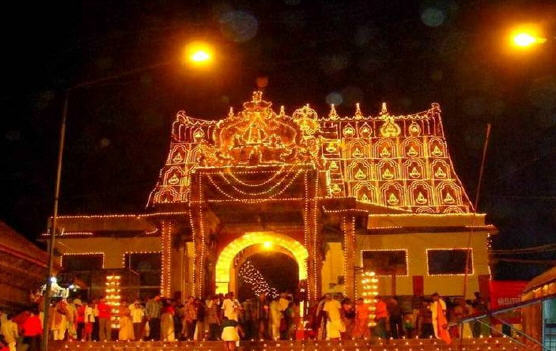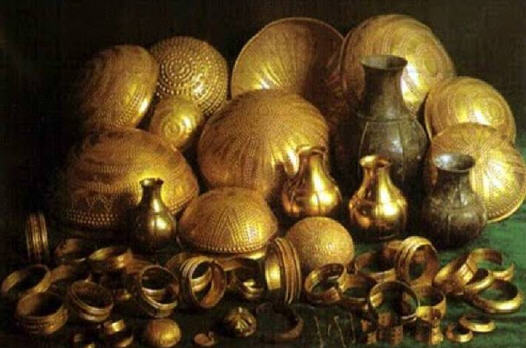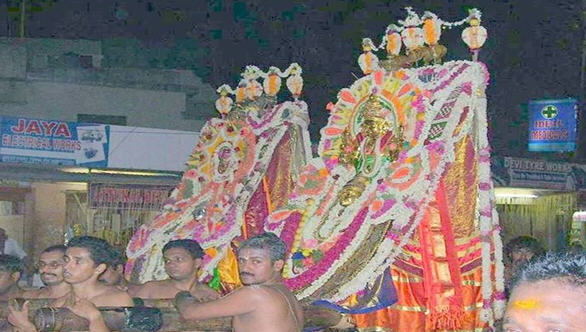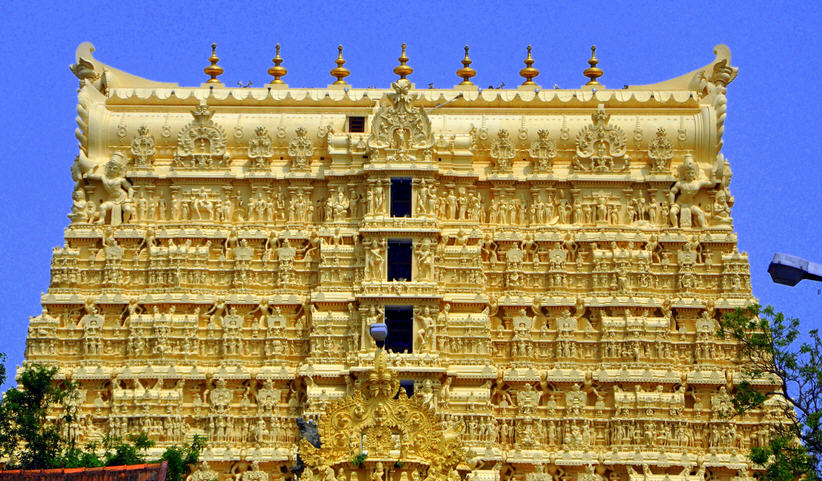Inside Sri Padmanabhaswamy temple complex there are a number of shrines.
Sri Krishna Temple:
Sri Krishna temple is situated in the northern side and it is believed that this is the place where Bilvamangal Thakura disappeared from this world. This temple has a flag staff made of silver.
Hanuman Deity:
There is a huge Deity of Hanuman near the golden flag staff of Lord Padmanabha. The body of Hanuman is covered with butter. This butter will not melt even in hot days or even in the presence of fire and will not attract ants and insects. In the seventeenth century, as mentioned above, when there occurred a massive fire in the temple, the butter was not affected. It is mentioned that the fire could not go beyond this point. Also, there are huge Deities of Jaya and Vijaya, the two kshetrapalas (protectors) are located near Hanumanji. It is believed that the foot of one kshetrapala is growing day by day. This is evident from the protruding of the leg beyond the wooden fencing.
Lord Nrsimhadeva Temple:
Before entering the main altar of Sri Ananta Padmanabha Swamy, we also are blessed with the darshan of beautiful form of Lord Nrsimhadeva.
Kulashekhara Alvar mandapam:
As we come outside of the main altar of Sri Ananta Padmanabha Swamy, we see a small mandapam dedicated to Kulashekhara Alvar. This is the place where King Kulasekhara composed many of his divine songs including famous Mukunda-mala-stotra. It is a marvellous and fantastic architectural work on stone. It is also known as Aayiramkaal Mandapam and Sapthaswara Mandapam. It is supported by 28 balustrades of pillars. The pillars on the four corners can produce musical notes when tapped. The pillars are adorned with exquisitely carved figures in half and full relief. It is called as Dashavatar Mandapam due to depictions of dashavatara on the mandapa pillars.
Ottakkal mandapam:
The Ottakkal mandapam is single stone platform in the Sri Padmanabhaswamy temple is a striking feature. The Mandapam is in front of the sanctum sanctorum of Lord Sri Padmanabhaswamy. This structure is built with a single slab of granite which is two and a half feet thick and twenty feet square. The Abhishekams to Lord Sri Padmanabhaswamy are performed in this mandapam. Its granite pillars are covered with gold.
Abhisravana mandapam:
This structure is in front of the Ottakkal mandapam but outside the Cherruchuttu containing the sanctum sanctorum. Special poojas related with temple festivals are performed here. Devotees use this mandapam for meditation and prayers.
The Golden flag-staff (Dwaja Stambham):
An eighty feet high pole near the eastern corridor was installed by Anizham Tirunal. A teak wood of this dimension was carried from the nearby forest to the temple. As per shastras, the wood should not touch the ground while in transport. The teak pole was then covered completely with gold foils. The apex of the flag pole has a figure of Garuda Swamy, in kneeling posture.
Nine Entrances:
The temple has nine entrances, indicating the nine orifices of the human body.
Gopuram:
The temple has a 100 foot, seven-tier gopuram on the eastern entrance. On top, there are seven golden domes suggesting pointers to the seven Worlds. The 10 incarnations of Lord Sri Krishna are portrayed inside the first storey of the gopuram. . The ground floor under the gopuram is known as the ‘Nataka Sala’ where the famous temple art, Kathakali is staged in the night during the ten-day uthsavam conducted twice a year, during the Malayalam months of Meenam and Thulam. The other three entrances are double storied Padippuras in typical Kerala Style. Entry to the upper levels of the gopuram is restricted.
The Sreebalippura (Corridor):
The temple has a marvelous Sreebalippura. This magnificent rectangular corridor built of stone surrounds the main shrines and it is through this corridor that the Vahanams are taken out during Sreebali (procession). Records say that daily 4000 stone artisans, 6000 labourers and 100 elephants worked for a period of six months to finish the construction of the Sreebalippura. Sreebalippura is supported by 365 and a one quarter of pillars. Each pillar is a monolith. The master artisan AnanthaPadmanabha Moothassari was in charge of the work.
Theerthams (Sacred water resources):
The temple stands by the side of a tank, named Padma Theertham. Padma theertham is one of the oldest water bodies in the city of Thiruvananthapuram. The temple has a large number of sacred water resources situated even in places far away from the temple.
Bells:
Large numbers of bells adorn the temple. In most cases, the tip of the bell has a metal banyan leaf attached to its tongue.
Mural paintings:
The outer walls of the sanctum sanctorum of Lord Sri Ananta Padmanabha Swamy and Lord Sri Krishna are adorned with murals. Of these, the Anantha sayanam on the backside of the sanctum is termed as the largest one among the temple murals of Kerala, and was painted by a brahmin artist by name Chalayil Kalahasti. It is of 18 feet long.
Multiplicity of Mandapams:
Another feature of this temple is the multiplicity of Mandapams (platforms). There are 11 mandapams in the temple and 8 in the Padma theertham pond.









